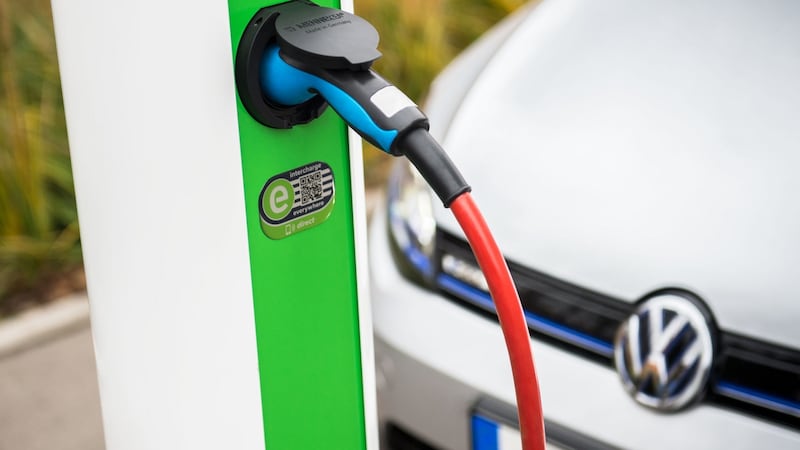Ireland’s car buyers are, at the worst possible time, deeply confused about the way in which different cars are powered, and just how eco-friendly (or otherwise) those cars are.
According to the latest research, Irish car buyers are still confused about exactly what kind of car does what best. Volkswagen Ireland’s studies show that 67 per cent of Irish drivers – incorrectly – believe a diesel car emits more CO2 than an equivalent petrol one. Almost 33 per cent of Irish driver mistakenly believe a hybrid car has zero emissions, while nearly half (44 per cent) of us believe electric cars produce some emissions while they are driving.
According to Carzone, the classified car sales website, four in 10 Irish buyers don’t know where their nearest electric car charging point is, while 33 per cent were unaware of the Government’s plans to ban the sale of petrol and diesel cars from 2030. Only 16 per cent believe that goal is achievable.
To help combat this, there are now schemes to help Irish car buyers through the bewildering world of electric cars, hybrids, plug-in hybrids, and mild hybrids. Volkswagen is about to launch a dedicated website just for that purpose, called CarExplainer.com. "It is clear from the survey findings and from what our retailers are hearing on the forecourts that the general public is quite confused. They are confused about the differences between the engine technology, be it petrol, diesel, hybrid, plug-in hybrid or electric, but they also don't know which technology suits their needs. We aimed to explain as clearly as possible the differences between all of these," says Volkswagen Ireland head of marketing, Mark McGrath.
Barrier to sales
Such confusion is a major barrier to sales, which is why there’s also now a group made up of many of Ireland’s leading car dealers, the Irish Car Carbon Reduction Alliance (ICCRA), which hopes “to promote collaboration between industry, policy makers and motoring advocates towards reaching the EU car carbon emission targets”. The group hopes to help its members help consumers make the right motoring decisions.
So, what is the difference between the various ways in which you can fuel and power your car?
We’re all familiar with basic old petrol and diesel, but the big differences here are that petrol is cleaner for air quality, but worse for climate-changing Co2. Diesel is the exact opposite, although expensive new technology to clean up diesel exhausts is potentially very effective.

Mild hybrids are basically ordinary engines with a tiny amount of electrical assistance, which means they can be switched off more in traffic, and in some cases can coast, engine-off, for brief periods on main roads. They’re only incrementally more efficient than a conventional engine, but if we put lots of them on the road, the cumulative reduction in emissions could be huge.
Hybrids use batteries, an electric motor, and a petrol engine tuned for economy to provide a combination of low emissions, low fuel consumption, but still reasonable power and performance for everyday driving. Toyota is the big player in the hybrid world, but others – notably Honda, Kia, and Hyundai – are catching up.
Short commuting
A plug-in hybrid takes that basic hybrid concept and adds bigger batteries and a more powerful electric motor, plus a plug point through which you can charge. The idea is to be able to charge up and cover short commuting and school-run distances (most will go for between 40km and 60km on a charge of the battery) on electric power, but with a normal petrol engine on board too for longer journeys. The downside is that the combined weight of engine and batteries can massacre fuel economy on those longer journeys.
Pure battery electric cars are arguably simpler – charge them up, and whizz around in silent, zero-emissions comfort. Not so simple though is the fact that their true emissions depend upon where you source your electricity, and the fact that making the big batteries for long-range models is hugely carbon-intensive in the first place.
Finally, hydrogen cars possibly still represent the future to which we should all be working. Refuelling takes minutes, and hydrogen is theoretically cheap and abundant. Much investment and research is still needed to bring the technology to fruition, though. And anyway, confusion or not, you can’t buy any hydrogen-fuelled cars in Ireland just yet.











